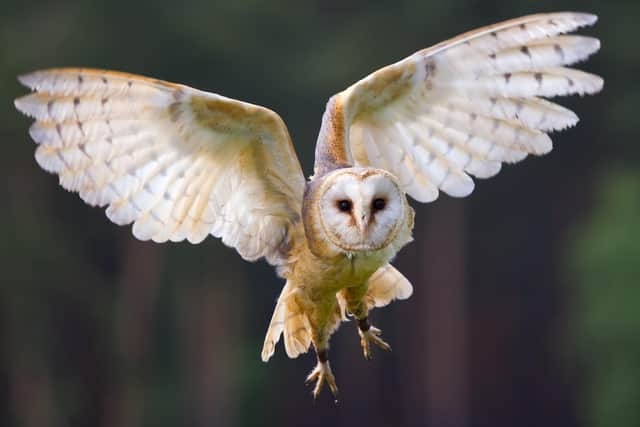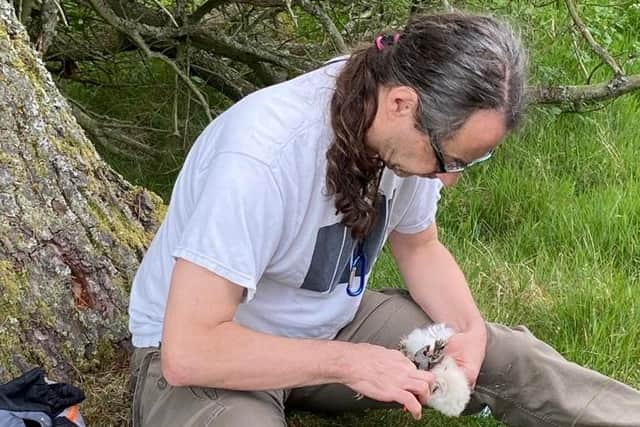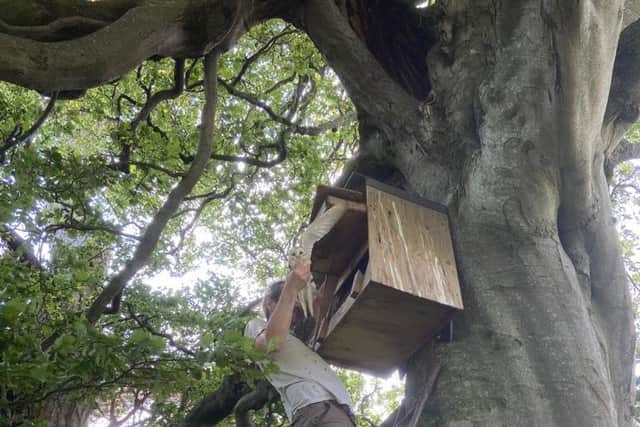Angus barn owls thriving thanks to conservation work
Barn owls have been building nests and rearing young in unused bothies and barns at Millden Estate, in Glen Esk, for decades.
But work to help the birds began in earnest in 2018, when keepers contacted the Barn Owl Trust about installing nesting boxes and where to place them.
That year ten chicks were successfully raised.


Advertisement
Hide AdAdvertisement
Hide AdHowever, harsh weather the following year, when the Beast from the East Arctic blast hit the country, had a devastating impact on the Angus glens and many species perished.
Only seven new barn owl chicks were recorded.
But the extra nesting sites coupled with measures to increase prey species - boosted by dry and warm weather in spring and early summer - have seen the owls thrive on the estate in 2020, raising 22 chicks.
Dr Stewart White, a senior lecturer from the School of Life Sciences at the University of Glasgow, has been working on the project with Millden head keeper Alistair Brown and his team.


Along with the Tay Ringing Group charity, Dr White has been involved in tagging the young owls in order to identify individuals.
He said: “The birds we monitor and ring are mostly in specially constructed boxes that we put up in sheds and outhouses.
“Ali and his keepers play an important role in our being able to monitor the birds by maintaining the boxes and keeping a general eye on them.
“They let us know which boxes are being used by the birds and help us with the ringing.


“The owls naturally nest in cavities and have evolved to use farm buildings, but putting up the nest boxes provides them with extra nesting sites and helps support the population.
Advertisement
Hide AdAdvertisement
Hide Ad“The owls feed on small mammals, particularly voles, and tend to forage in areas of rough grassland or along the edges of woodland.
“Breeding success, or even if breeding takes place at all, is very much dependent on the small mammal prey being available.”
The success of the conservation work has been welcomed by the Millden team.


Mr Brown said: “Seeing the owls in flight is amazing, as well as hearing their distinctive ‘screech’ call.
“We put up the first nesting boxes in 2018 and we have had 22 chicks survive this year in six nesting boxes, which gives a good chance of future stability for the population.
“We extended the feeding programme of our low-ground wild bird stations into April and this has helped increase the availability of prey for the owls.
“The area where the barn owls like to hunt has plenty of ground-cover plants and this area has been expanded in recent years from six acres to over 20 acres.”
Barn owl populations crashed through the 20th century, reaching an all-time low in the 1970s and 1980s.
Advertisement
Hide AdAdvertisement
Hide AdIncreased use of pesticides, changing farming practices and other more general factors have been blamed.
Since then numbers have been recovering due to conservation efforts by organisations such as the BTO and RSPB and also smaller-scale projects such as the work being done on Millden.
Population estimates suggest there are around 1,000 breeding pairs nesting in Scotland.
Dr White added: “As always in science, there is not universal agreement, but many ecologists argue that top predators such as birds of prey can be used as indicators for general ecosystem health.
“For there to be enough resources for animals at the top of the food web the organisms and their interactions all the way down to the bottom of the food web must be in a healthy state.
“If this is the case, then the recovery of barn owl numbers can be seen as a positive sign for the ecosystem in general.”
Dr White and the Millden team are also working to help wader species such as lapwing, oystercatcher, redshank and the critically endangered curlew, as well as keeping an eye on the local population of red-listed ring ouzels.
A message from the Editor:
Thank you for reading this story on our website. While I have your attention, I also have an important request to make of you.
The dramatic events of 2020 are having a major impact on many of our advertisers - and consequently the revenue we receive. We are now more reliant than ever on you taking out a digital subscription to support our journalism.
Subscribe to scotsman.com and enjoy unlimited access to Scottish news and information online and on our app. Visit https://www.scotsman.com/subscriptions now to sign up.
By supporting us, we are able to support you in providing trusted, fact-checked content for this website.
Joy Yates
Editorial Director
Comments
Want to join the conversation? Please or to comment on this article.